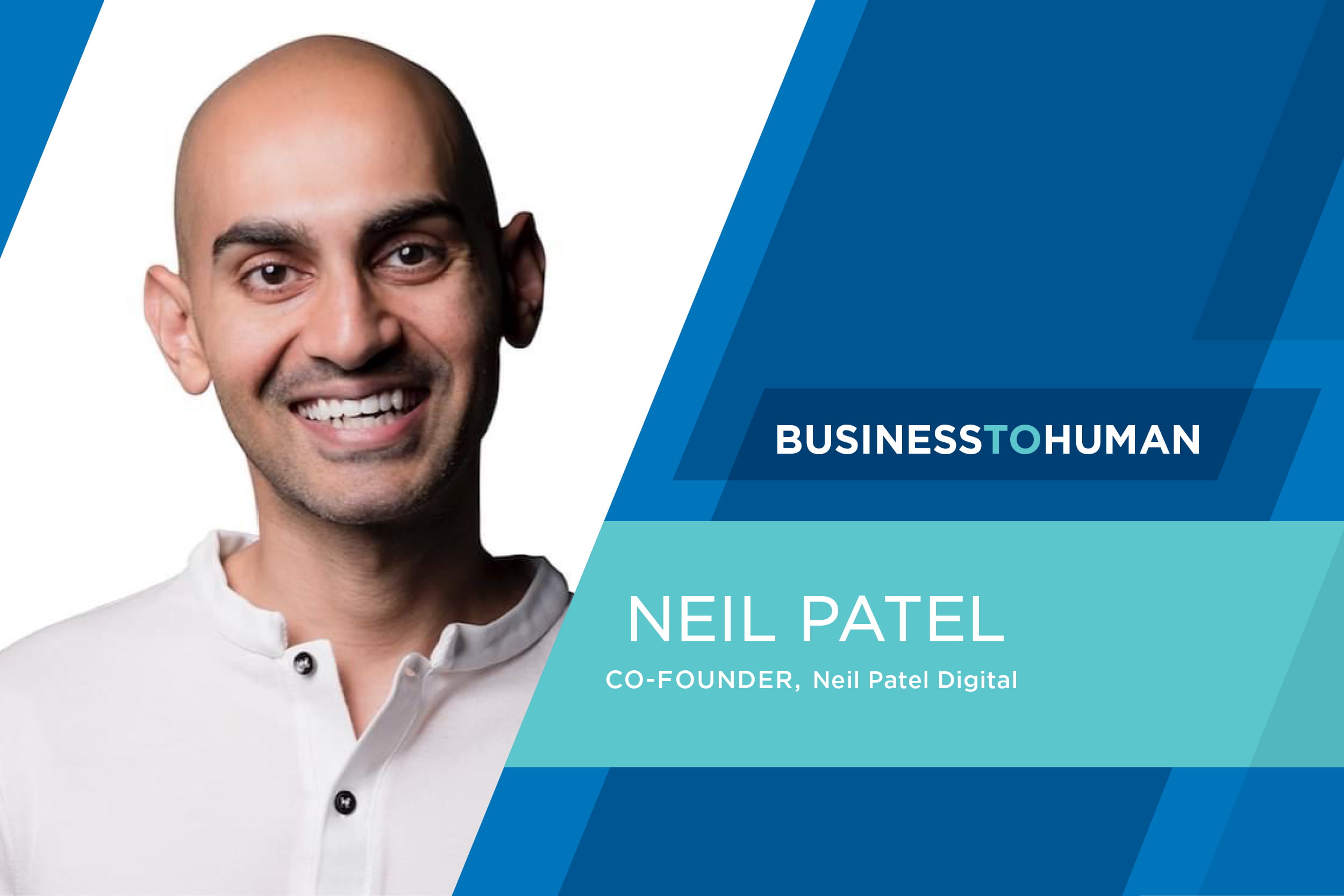READ THIS BLOG FOR INSIGHT ON
- What the future looks like for consumer marketers
- Shifts in consumer expectations
- What consumer messaging changes marketers can expect
- What marketers need to do differently tomorrow to keep up
- What’s missing from the modern marketing toolkit
It is more challenging than ever for marketers to sell their goods and services. Marketers must be resourceful and savvy to keep up with the new trends.
Our guest for episode 9 of our Business to Human podcast series has been recognized by prestigious publications such as the Wall Street Journal and Forbes and acknowledged by the United Nations as one of the world’s most influential marketers. We are excited to have him share his insights on how to win in today’s competitive world of marketing. Neil Patel is the Co-Founder at Neil Patel Digital, a marketing agency focusing on creating innovative, adaptive and data-driven digital marketing plans. In this episode, Neil talks about what the future of marketing will look like for marketers and consumers.
What does the future look like for consumer marketers?
Though connecting to today’s consumers can be challenging, consumer marketers are still looking toward the future to crack the code.
According to Neil, part of achieving that connection is casting a wider net through globalization. Many marketers today are targeting consumers in just one region — this approach only limits their potential.
“Yes, the U.S. makes up a large chunk of the revenue. But if you add up the revenue from all the other regions, it greatly surpasses what companies are generating in the United States”
– Neil Patel
To successfully achieve globalization with your company, it’s true there are some barriers to entry. You need a strong understanding of the local culture, identify effective marketing strategies for different regions, and gain knowledge of the various business aspects of the area, like payment processing. Familiarizing yourself with the local audiences enables your business to reach new levels of clientele and generate more revenue — often with far fewer competitors than in the highly saturated U.S. market.
Shifts in consumer expectations and how to adapt
During COVID, consumers learned to do things differently — trying out different websites, purchasing different products, and ultimately approaching even day-to-day purchases with a very different mindset.
Today, people are a lot more price-sensitive and doing more comparison shopping. They are more conscious than ever of getting the most bang for their buck. Marketers should anticipate consumer expectations to only become more demanding and need to find unique ways to impress them.
“For the next year or five years, you have to figure out how you can go above and beyond and delight people,” says Neil, emphasizing that faster shipping and lower prices are strategies with diminishing returns.
Find new ways of going above and beyond to differentiate from competitors and leave a lasting impression on consumers. Whether it’s better service, more value in your product — or even something as simple as convenience — there are countless ways to keep your customers happy without it compromising your business.
Advice for the marketers of tomorrow
When asked what’s missing from the modern marketing toolkit, Neil says “I don’t think there’s anything missing from the toolkit, I just don’t think people use the toolkits.”
Many marketers have an array of features at their disposal but tend to use the same select few, limiting their data and customer knowledge. Speaking directly to consumers has become a thing of the past as many marketers are now relying on analytics to understand customers preferences and behaviors.
But one thing never changes: Customer feedback is still the key to a business’s success. Conversations with customers give your team the qualitative data needed to truly increase conversion. If you’re looking to learn what consumers really want, ask them.
Media and marketing solutions are often overlooked by marketers, even when the company has already purchased them. Make sure that your marketing team is properly educated on each tool available and how to put it to use. Watch videos and tutorials, try out demos, and make sure that you’re familiar with a tool before purchasing it.
Marketers can get stuck in their ways but changing up your routine and always seeking new ways to connect with your customers will provide unprecedented data, conversions, and growth.
Did you enjoy the content? Listen to the full Business to Human episode.
To hear this episode, and many more like it, you can subscribe to Business to Human Podcast on our website, Apple Podcasts, Spotify, or just search for Business to Human Podcast in your favorite podcast player.
